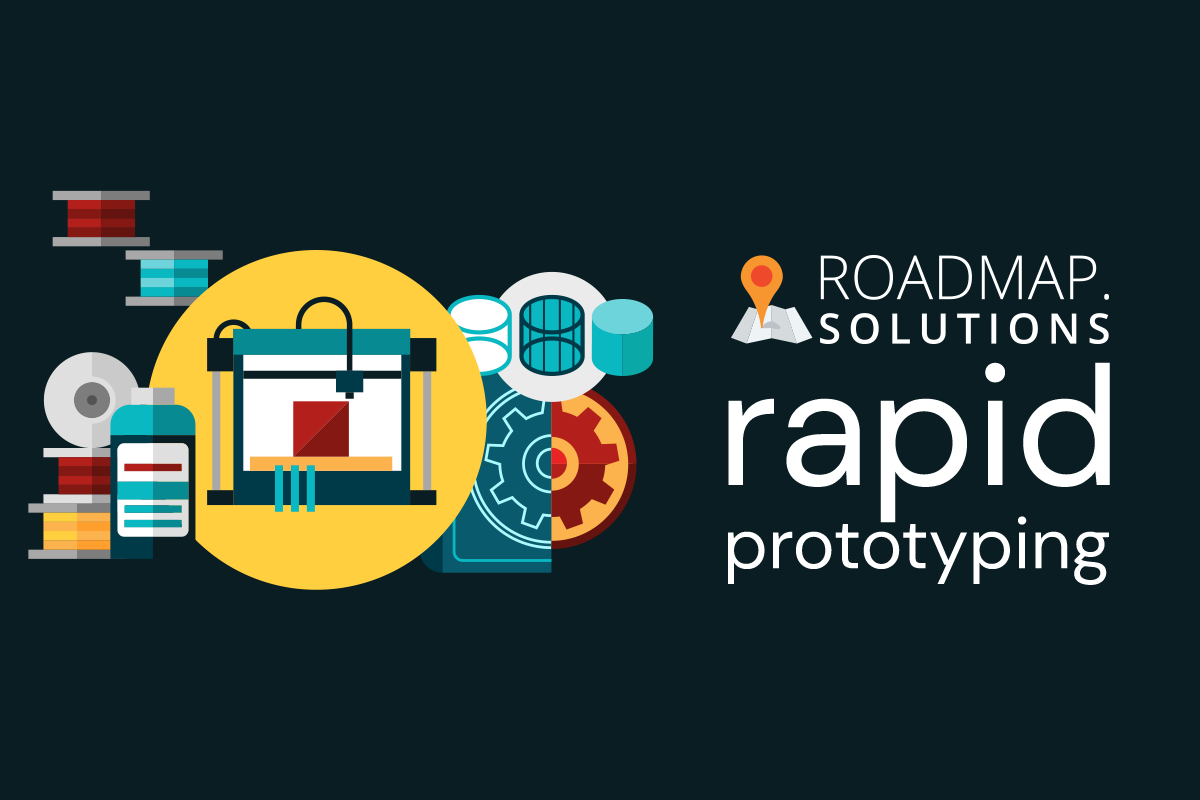Since we started I.T. Roadmap, our motto has been “Straight answers from smart people.” What that means to us is that, when we enter into a business relationship, we try to get a full picture of what’s going on. We’ll try to view problems from the perspective of the business owner, employees, customers, suppliers—anyone who interacts with the business in any way. And then we’ll tell you how we think your problem could be solved. Sometimes it’s with technology; sometimes it’s not. And sometimes the solution is something that doesn’t exist yet. The first step to creation of that new product: rapid prototyping.
We have always had an interest in inventing and tinkering, and we count ourselves as members of the maker community. Now, with the rise of technologies like 3D printing, Arduino, and Raspberry Pi, the threshold for creation of a new product has been significantly lowered. Some refer to this as “rapid prototyping.” Rapid prototyping can be any technique used to quickly fabricate a part or model, often using 3D modeling programs like AutoCAD. But with these newer tools, we’ve been able to skip the CAD (Computer Aided Design) stage and move straight to assembly.
Rapid Prototyping in Action
For example, one of our clients is a company that provides mosquito fogging services to municipalities. Generally, this large-scale fogging is done on a vehicle not unlike a tractor. This type of vehicle generally is attached to a fogging device which is turned on and off manually, by the operator. There are some vehicles/foggers with more automation, but in each case it’s proprietary—designed for that specific vehicle—and is quite expensive.
So what if we made a “dumber” hardware box and made the software smarter? We’ve seen this trend in innovations that range from the Tesla to the Nest thermostat to the Amazon Echo. Each roll out updates periodically that make the product better.
For the “dumb” part of our fogger device, we designed a circuit board with some switches that can be operated by Bluetooth and we put it in a plain plastic box. And for the smart part, an app runs on an Android or iOS device to turn the device on and off. But turning it on and off was just the beginning, of course. With software updates, we added a feature that allows the app to tell the vehicle driver where to go, reducing the need for training. Later updates allowed the app to record the ambient temperature, so that the vendor can confirm that the pesticide was applied in optimal weather. Another update allows the administrator to set up “geofencing” to avoid areas where residents have requested no fogging (to protect beehives, for example).
Roadmap.Solutions: Our Rapid Prototyping Entity
We’ve set up a website for the business solutions we’re developing at roadmap.solutions. (Note that there is no .com.) Here, the first-generation device we call the FoggerMap can be purchased. We’d like to encourage our clients to indulge in a little “moonshot” thinking, because their dream might not be out of reach after all. Another of our clients asked if they could be alerted by text if a mousetrap was sprung. Indeed, it can be done. Another client asked about a monitor that would display customized information for patients in their waiting room instead of the canned material available from medical education companies. Yes, we can do that.
Do you have an idea for a technological solution that seems a bit out of reach? It could very well be do-able. Contact us to get started.






